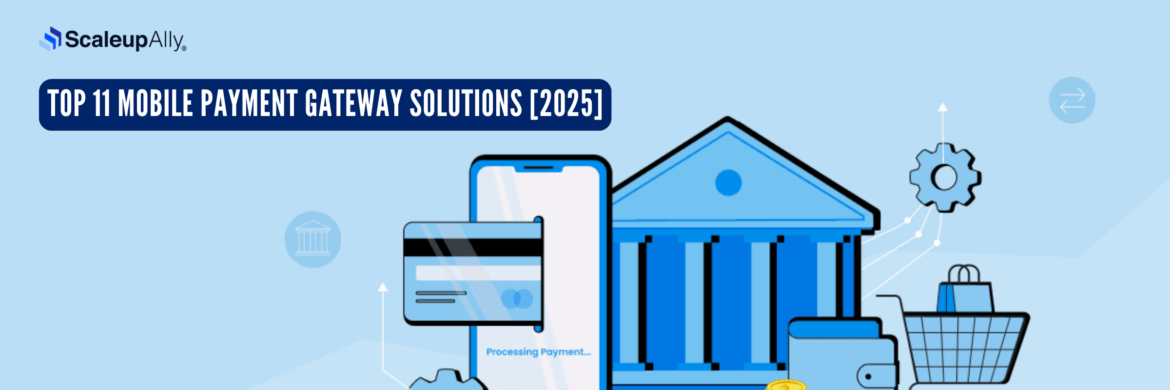
Choosing the Right Stripe Charges for Your Platform
Suprabhat Sen | July 16, 2023 , 14 min read
Table Of Content
As an online marketplace, one of the crucial decisions you must make is choosing the right payment system to integrate with your platform. Stripe Connect, a popular payment system for marketplaces, offers different types of connect charges that can significantly impact your user experience, revenue management, and overall success. In this article, we will explore the types of charges in Stripe Connect: Direct Charges, Destination Charges, and Separate Charges and Transfers. We will compare their characteristics, use cases, and potential pitfalls to help you make an informed decision.
Key Takeaways
- Stripe Connect is a powerful tool for marketplaces to manage payments.
- Direct Charges are simple but limit platform control.
- Destination Charges offer more control but increase platform liability.
- Separate Charges and Transfers provide flexibility for complex payment scenarios.
- Choose the right charge type based on platform involvement, liability, control, and complexity.
- Consider regional restrictions and Stripe account type when making a decision.
What is Stripe Connect?
Before diving into the different charge types, let’s understand the basics of Stripe Connect. Stripe Connect is a payment system that allows marketplaces to route payments between multiple parties. It enables platforms to collect payments from end customers and send the money to connected accounts. The connected account refers to the Stripe account of the user or business you are enabling. When a payment is collected from an end customer, it can only settle on one account, known as the settlement account or the merchant of record.
Stripe Connect provides a range of funds flows, also known as charge types, to handle payments and transfers between buyers, sellers, and the platform. The choice of charge type depends on various factors such as the platform’s relationship with sellers, the need for split payments, responsibility for refunds and chargebacks, and the desired level of control over the payment flow.
Direct Charges: Simplifying Transactions Between Buyers and Sellers
The first charge type offered by Stripe Connect is Direct Charges. Direct charges are designed to handle transactions between buyers and sellers without the involvement of a marketplace intermediary. It works best with Standard accounts, where sellers create their own Stripe accounts. This approach removes the onboarding burden from the platform, as sellers are responsible for managing their accounts.
Characteristics of Direct Charges:
- Stored on the connected account: In direct charges, the connected account serves as the settlement merchant, and the payment is stored in their Stripe account.
- Connected account pays Stripe processing fees: The connected account is responsible for paying the processing fees associated with the transaction.
- Connected account handles disputes and refunds: While the platform can assist, the connected account holds the responsibility for managing disputes and processing refunds.
- Compatible with accounts with access to the Standard dashboard: Direct charges work well with accounts that have access to the Standard dashboard in Stripe.
- Customers interact directly with the seller: In direct charges, customers transact directly with the seller, often unaware of the platform’s existence.
- Single connected account involved in the transaction: Direct charges involve a single connected account, which is the seller’s account.
- Fraud and dispute management: Depending on the responsibility for losses on the connected account, the platform may be insulated from fraud and disputes. For Standard accounts, Stripe manages fraud and losses on the connected account.
- Suitable for infrastructure providers: Direct charges are suitable for platforms that serve as infrastructure providers for other businesses, such as e-commerce platforms like Shopify or Squarespace.
- Supported for connect accounts with the card_payments capability: Direct charges are supported for connect accounts with the card_payments capability, allowing sellers to accept credit card payments.
Direct charges can be implemented by adding a Stripe-Account header to the API call when creating payment-related objects like PaymentIntents or Checkout Sessions. This header specifies the connected account to which the payment should be directed.
Advantages and Considerations for Direct Charges
Direct charges offer simplicity and ease of implementation, making them suitable for certain use cases. Here are some advantages and considerations to keep in mind when choosing direct charges:
Advantages of Direct Charges:
- Simplified onboarding: With direct charges, the platform is relieved of the onboarding burden, as sellers create and manage their own Stripe accounts.
- Transparent customer experience: Customers transact directly with the seller, enhancing transparency and reducing confusion.
- Compatibility with Standard accounts: Direct charges work seamlessly with accounts that have access to the Standard dashboard in Stripe.
- Insulation from fraud and disputes: Depending on the responsibility for losses on the connected account, the platform may be protected from fraud and disputes.
Considerations for Direct Charges:
- Responsibility for disputes and refunds: The connected account holds the primary responsibility for handling disputes and processing refunds, which may require additional support from the platform.
- Limited reporting capabilities: Aggregate statistics related to direct charges can be challenging to query and report on, as the platform needs to access each connected account individually.
- Inability to migrate between account types: It’s important to choose the appropriate account type from the beginning, as migrating from Connect Standard to Connect Express is not possible without recreating seller data.
Use Cases for Direct Charges
Direct charges are well-suited for certain scenarios where a direct transaction between the buyer and seller is preferred. Here are some common use cases for direct charges:
- E-commerce platforms: Platforms like Shopify or Squarespace, which enable businesses to sell products online, can benefit from direct charges. Customers interact directly with the sellers, and the platform serves as an infrastructure provider.
- Accounting platforms: Platforms that facilitate invoice payments, such as Freshbooks, can use direct charges to enable their users to collect payments directly from their customers.
Direct charges provide a straightforward payment flow that simplifies the transaction process for both buyers and sellers. However, it’s important to consider the responsibility for disputes, refunds, and the platform’s reporting requirements when choosing this charge type.
Destination Charges: Streamlining Payments in Marketplaces
The second charge type offered by Stripe Connect is Destination Charges. Destination charges are primarily used with Express or Custom accounts and are designed for marketplaces that act as intermediaries between buyers and sellers. With destination charges, the platform can create a charge and a transfer simultaneously, streamlining the payment process.
Characteristics of Destination Charges:
- Charge on the platform account: In destination charges, the charge is created on the platform’s Stripe account, serving as the intermediary between buyers and sellers.
- Best suited for Express and Custom accounts: Destination charges work best with Express or Custom accounts, where the platform has more control over the payment flow.
- Customers transact with the platform: In destination charges, customers interact with the platform for products or services provided by the sellers.
- Single connected account involved: Similar to direct charges, destination charges involve a single connected account, which is the seller’s account.
- Platform control over transfers: The platform can independently reverse transfers without affecting refunds or disputes on the charge.
- More control but increased involvement: Destination charges provide the platform with more control over the payment flow, but it also requires more involvement in managing funds.
- Suitable for unified business platforms: Destination charges are suitable for platforms that operate as a unified business, such as ride-hailing services like Lyft or service marketplaces like Thumbtack.
- Stripe payment fee pricing: Destination charges utilize the Stripe payment fee pricing of the platform, allowing for revenue management.
- Shared customers and payment methods: Destination charges enable the platform to share customers and their payment methods across connected accounts.
Destination charges can be implemented by making an API call to create a payment-related object with the transfer_data.destination parameter set to the connected account’s ID. This creates an atomic transaction, where the charge and transfer occur simultaneously.
Advantages and Considerations for Destination Charges
Destination charges offer more control over the payment flow and revenue management for marketplaces. Here are some advantages and considerations to keep in mind when choosing destination charges:
Advantages of Destination Charges:
- Simplified payment process: Destination charges streamline the payment process by creating a charge and transfer simultaneously.
- Platform control over transfers: The platform can independently reverse transfers without affecting refunds or disputes on the charge.
- Shared customers and payment methods: Destination charges enable the platform to share customers and their payment methods across connected accounts, improving the user experience.
- Revenue management: Destination charges utilize the Stripe payment fee pricing of the platform, allowing for effective revenue management.
Considerations for Destination Charges:
- Responsibility for Stripe fees, refunds, and chargebacks: The platform assumes the responsibility for Stripe fees, refunds, and chargebacks, requiring efficient management and support.
- Limited to Express and Custom accounts: Destination charges are best suited for platforms that have Express or Custom accounts, limiting their applicability to certain types of marketplaces.
- Configuration of Radar rules: The platform needs to configure Radar rules separately for each connected account, as Express and Custom accounts cannot set their own rules.
Use Cases for Destination Charges
Destination charges are well-suited for marketplaces that act as intermediaries between buyers and sellers. Here are some common use cases for destination charges:
- Ride-hailing services: Platforms like Lyft or Uber, where customers book rides provided by drivers, can utilize destination charges. The platform serves as the intermediary and handles the payment flow.
- Service marketplaces: Marketplaces like Thumbtack, where customers hire service providers for various tasks, can benefit from destination charges. The platform facilitates the payment process and ensures seamless transactions.
Destination charges provide marketplaces with more control over the payment flow and revenue management. However, it’s important to consider the responsibility for Stripe fees, refunds, and chargebacks when choosing this charge type.
Separate Charges and Transfers: Flexibility in Splitting Payments
The third charge type offered by Stripe Connect is Separate Charges and Transfers (SCT). Separate charges and transfers allow platforms to collect payments and transfer proceeds at different times, providing flexibility in splitting payments between multiple connected accounts.
Characteristics of Separate Charges and Transfers:
- Charge on the platform account: In separate charges and transfers, the charge is stored on the platform’s Stripe account.
- Platform pays Stripe processing fees: The platform assumes the responsibility for paying the Stripe processing fees associated with the charge.
- Best suited for Express or Custom accounts: Separate charges and transfers work best with Express or Custom accounts, offering more flexibility and control over the payment flow.
- Multiple connected accounts involved: Unlike direct and destination charges, separate charges and transfers can involve multiple connected accounts, allowing for split payments.
- Ideal for unknown connected accounts: Separate charges and transfers are suitable when the specific connected account is not known at the time of the charge.
- Transfer at a later time: Transfers can be made at a later time, allowing for delayed payouts to connected accounts.
- Suitable for multiple recipient marketplaces: Separate charges and transfers are ideal for marketplaces where multiple connected accounts are involved in a single transaction.
- Limitations based on region: Separate charges and transfers are currently supported only for marketplaces with accounts in specific regions, such as Australia, Canada, Europe, Japan, Malaysia, New Zealand, Singapore, or the US.
- Platform responsible for Stripe fees, refunds, and chargebacks: Similar to destination charges, the platform assumes the responsibility for Stripe fees, refunds, and chargebacks.
Separate charges and transfers require at least two API calls: one to create the payment-related object and another to create the transfer. This allows platforms to move funds between the platform account and one or more connected accounts.
Advantages and Considerations for Separate Charges and Transfers
Separate charges and transfers offer flexibility in splitting payments between multiple connected accounts. Here are some advantages and considerations to keep in mind when choosing separate charges and transfers:
Advantages of Separate Charges and Transfers:
- Flexibility in splitting payments: Separate charges and transfers allow platforms to split payments between multiple connected accounts, accommodating complex revenue-sharing models.
- Ideal for marketplaces with unknown connected accounts: When the specific connected account is not known at the time of the charge, separate charges and transfers provide a suitable solution.
- Delayed transfers: Transfers can be made at a later time, allowing platforms to schedule payouts to connected accounts.
- Suitable for multiple recipient marketplaces: Marketplaces that involve multiple connected accounts in a single transaction can benefit from separate charges and transfers.
Considerations for Separate Charges and Transfers:
- Limited to specific regions: Separate charges and transfers are currently supported only for marketplaces with accounts in certain regions, which may restrict their usage.
- Responsibility for Stripe fees, refunds, and chargebacks: The platform assumes the responsibility for Stripe fees, refunds, and chargebacks, requiring efficient management and support.
Use Cases for Separate Charges and Transfers
Separate charges and transfers are well-suited for marketplaces that involve multiple connected accounts and require flexibility in splitting payments. Here are some common use cases for separate charges and transfers:
- E-commerce marketplaces: Marketplaces that allow a single shopping cart for goods sold by multiple businesses can utilize separate charges and transfers. This allows for seamless revenue-sharing between the platform and sellers.
- Delivery services: Platforms like Instacart, which need to split payments between the store (the source of the items being delivered) and the delivery person, can benefit from separate charges and transfers. This enables efficient payment distribution.
Separate charges and transfers provide marketplaces with the flexibility to split payments between multiple connected accounts, accommodating complex revenue-sharing models. However, it’s important to consider the limitations based on region and the responsibility for Stripe fees, refunds, and chargebacks when choosing this charge type.
Conclusion
When integrating Stripe Connect into your online marketplace, choosing the right charge type is essential to ensure your platform’s success. Stripe Connect offers several charge types, each with unique characteristics, advantages, and considerations that should align with your platform’s requirements. Let’s have an overview of stripe connect charge types.
Direct charges simplify transactions between buyers and sellers, enabling sellers to receive payments directly into their Stripe accounts. Meanwhile, destination charges streamline payments in marketplaces by allowing the platform to receive the payments and then distribute them to the appropriate sellers.
If your platform requires flexibility in splitting payments between multiple connected accounts, separate charges and transfers may be the most suitable option. This charge type allows you to split payments between multiple connected accounts, providing flexibility to manage payments effectively.
To determine the most appropriate charge type for your platform, evaluate your relationship with sellers, the need for split payments, responsibility for refunds and chargebacks, and the desired level of control over the payment flow. By carefully considering these factors, you can choose the type that best aligns with your platform’s requirements.
At ScaleupAlly, we specialize in Stripe integration services tailored to your platform’s unique needs. Whether you’re building a multi-vendor marketplace, a service-based platform, or a subscription-driven business, our team of experts will help ensure you provide a smooth and compliant payment experience to you customers.
Related Blogs

15 Best Payment Gateways in the UAE in 2025 [Latest Updated]
Discover the top 15 payment gateway options in the UAE, including features, and pricing plans for businesses seeking secure online transactions.
Suprabhat Sen
Nov 25 ,
13 min read

Top 13 Mobile Payment Gateway Solutions [2025]
Discover the top 13 mobile payment gateways, with key features, pros, cons, and integration tips to help you choose the best solution for your app.
Suprabhat Sen
Nov 8 ,
18 min read

10 Best Ecommerce Payment Gateways in UAE
Explore the best ecommerce payment gateways in UAE. Compare providers, costs, compliance, and features to choose the right solution for your business.
Suprabhat Sen
Sep 30 ,
13 min read



